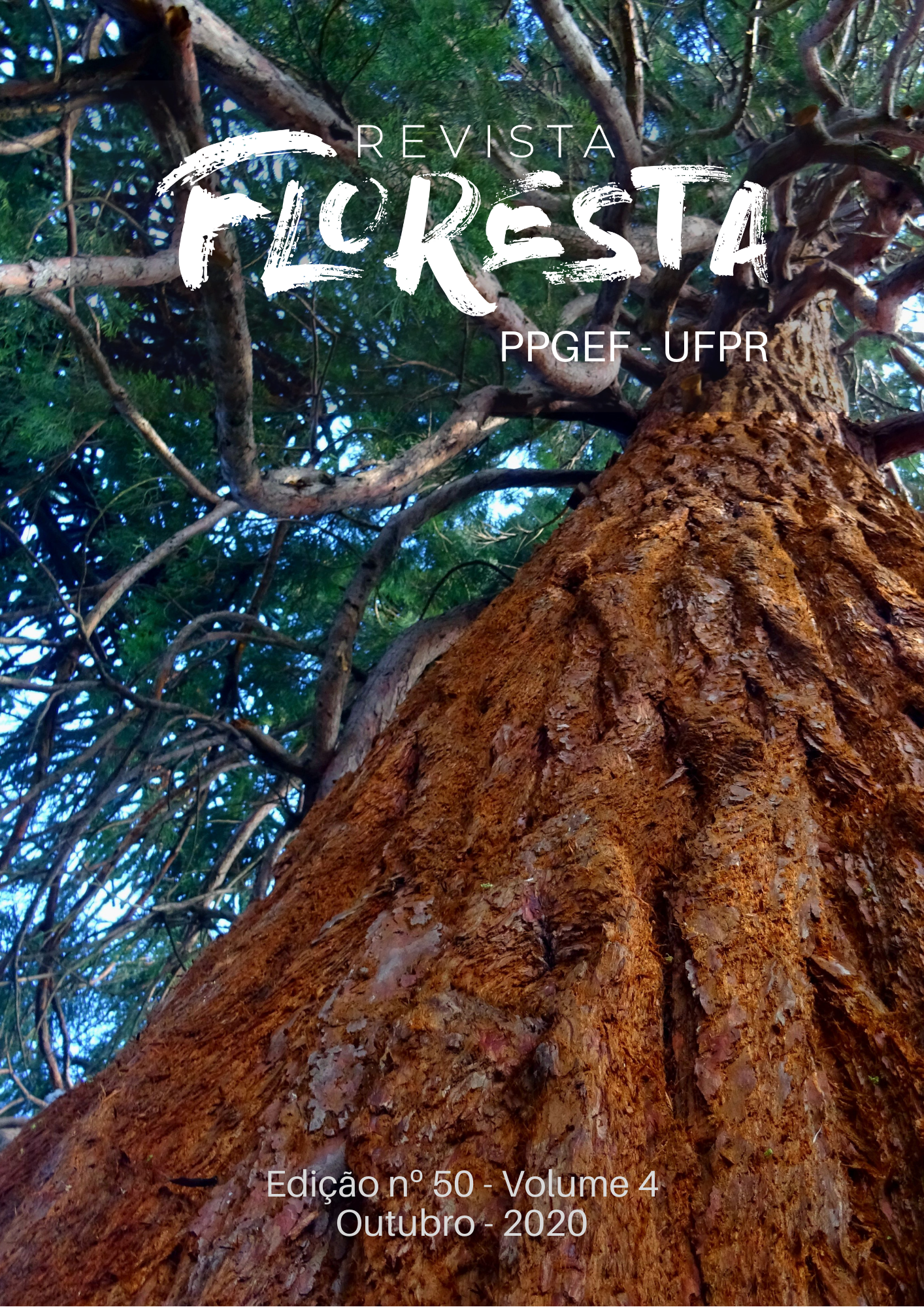EUCALYPTUS INICIAL GROWTH ON HUMIC CAMBISOL WITH APPLICATION OF LIMESTONE, GYPSUM, AND LIME MUD
DOI:
https://doi.org/10.5380/rf.v50i4.65682Palavras-chave:
Alkali residue, Eucalyptus dunnii, liming, timber volume.Resumo
The high demand for forest products in Brazil estimates a 2 million hectares increase in reforestation areas over the next 10 years, highlighting Eucalyptus species. However, these crops usually occur in acid soils that need correction to achieve high productivity. Besides limestone, lime mud, a residue from the cellulose industry, and gypsum can also be used as correctives, but there are doubts about doses and ways of application with the best results. Thus, were evaluated the soil chemical attributes, foliar nutrient content, and initial growth of a Eucalyptus dunnii Maiden crop in response to the application of limestone, lime mud, and gypsum in different doses and ways of applications, on a Humic Cambisol from Santa Catarina Plateau. The experiment was carried out with nine treatments in four replicates, where the evaluated parameters were determined up to 24 months after planting. In general, both limestone, lime mud, and gypsum, in different doses and ways of application, affected the chemical attributes of the soil but did not affect the foliar nutrient content at 12 months, height, and diameter at breast high (DBH) from trees and timber volume at 24 months. Gypsum do not correct soil acidity but lime mud provides similar results to limestone indicating that can substitute this corrective without damage to nutritional status and initial development of Eucalyptus dunnii.
Downloads
Publicado
Como Citar
Edição
Seção
Licença
Direitos Autorais para artigos publicados nesta revista são do autor, com direitos de primeira publicação para a revista. Em virtude da aparecerem nesta revista de acesso público, os artigos são de uso gratuito, com atribuições próprias, em aplicações educacionais e não-comerciais.A revista, seguindo a recomendações do movimento Acesso Aberto, proporciona acesso publico a todo o seu conteudo, seguindo o principio de que tornar gratuito o acesso a pesquisas gera um maior intrcambio global de conhecimento.
Conteúdos do periódico licenciados sob uma CC BY-NC-SA 4.0



